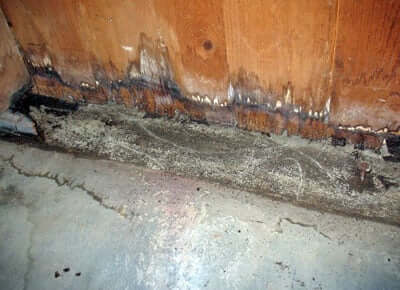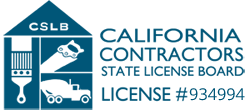
Storms can cause significant damage to residential and commercial properties, leading to costly repairs and restoration projects. Leaks, in particular, can pose a major threat, resulting in water damage, mold growth, and structural issues. Proactive leak detection and repair are vital steps in the prevention of storm damage, allowing you to identify and address potential problems before they escalate further.
As a locally owned and operated company, we provide full-service restoration solutions to residents and businesses in Los Angeles, Orange, Riverside, and Ventura counties. In this article, we will discuss the importance of leak detection and repair in preventing storm damage, common causes of leaks, and how our experienced team can assist you in safeguarding your property from the consequences of storm-related leaks.
Storm damage can disrupt lives and businesses, requiring extensive restoration efforts to make the affected spaces safe, functional, and habitable once more. Proactive leak detection and timely repairs can significantly minimize the risk of costly storm damage while ensuring the longevity and structural soundness of your property. By investing in leak detection and repair, you are taking an essential step in limiting the impact of storms and safeguarding the integrity of your property.
1. The Importance of Leak Detection to Prevent Storm Damage
Identifying and addressing leaks before they lead to more extensive damage is crucial in protecting your property from the costly consequences of storm events. Here are a few reasons why proactive leak detection is essential:
- Preventing water damage and structural issues: Leaks can allow moisture to seep into your property’s walls, floors, and ceilings, potentially causing significant water damage, mold growth, and structural issues if left unattended.
- Minimizing restoration costs: Promptly identifying and repairing leaks can save you time and money on future restoration projects by preventing more extensive damage from occurring in the first place.
- Protecting your property’s value: Maintaining the structural integrity and appearance of your property is vital in preserving its value. Proactive leak detection and repair contribute to this by safeguarding against water damage and maintaining a safe and healthy living or working environment.
2. Common Causes of Leaks during Storm Events
To effectively manage and prevent leaks, it is essential to understand the common causes of leaks during storm events. Some of these causes include:
- Damaged or improperly installed roofing materials: Roof leaks are the most common cause of storm-related water damage. Damaged, aged, or poorly installed roof materials can easily allow water to infiltrate your property during heavy rain or storm events.
- Blocked or damaged gutters: Gutters that are clogged with debris or not properly maintained can lead to water overflow, potentially causing leaks and damage to your property’s foundation.
- Damaged or worn-out window and door seals: Over time, the seals around your windows and doors can break down, allowing water to seep in during storms.
- Plumbing issues: During storm events, existing issues with your property’s plumbing system, such as damaged pipes or poor connections, can become exacerbated and lead to leaks.
3. Leak Detection Technologies and Techniques
Our skilled team utilizes a variety of advanced techniques and technologies to effectively detect leaks and pinpoint their source within your property. These include:
- Infrared thermography: Infrared cameras can detect temperature differences along walls, ceilings, and floors, allowing us to identify the presence of moisture and potential leaks.
- Ultrasonic leak detection: Utilizing specialized equipment that emits ultrasonic sound waves, our technicians can locate the source of leaks in pipes, even those that are hidden within walls or flooring.
- Smoke testing: By injecting smoke into your property’s plumbing system, we can visually identify areas where leaks are present, allowing us to address the issue quickly and accurately.
- Moisture meters: These devices are highly effective in detecting and measuring moisture levels within a variety of materials, helping us to identify the precise location of leaks and the extent of water damage.
4. Expert Leak Repair and Prevention Solutions
Our experienced team is equipped to handle various leak repairs and provide solutions tailored to your property’s unique needs. Our leak repair and prevention services include:
- Roof repair and maintenance: Our technicians can identify and repair damaged or poorly installed roof materials to protect your property against leaks and water damage during storms.
- Gutter maintenance and repair: We can clean and repair your gutters to ensure proper drainage and prevent water overflow that can lead to leaks and other related issues.
- Window and door seal replacement: Our team can replace worn-out or damaged seals around windows and doors to prevent water infiltration during storm events.
- Plumbing repairs and upgrades: We can address any existing plumbing issues, including damaged pipes and poor connections, to minimize the risk of leaks during storms.
Secure Your Property’s Safety and Integrity with Proactive Leak Detection and Repair
If left unaddressed, storm-related leaks can lead to significant water damage, mold growth, and structural issues. Proactive leak detection, timely repairs, and prevention measures are key to avoiding expensive and extensive storm damage restoration projects. By working with our experienced team, you are investing in the protection and preservation of your property’s value and ensuring its preparedness to withstand storm events.
Don’t wait for a leak to cause costly storm damage—contact Restoration Masters today to schedule a comprehensive leak detection and repair service to secure your property’s safety and integrity for years to come.





